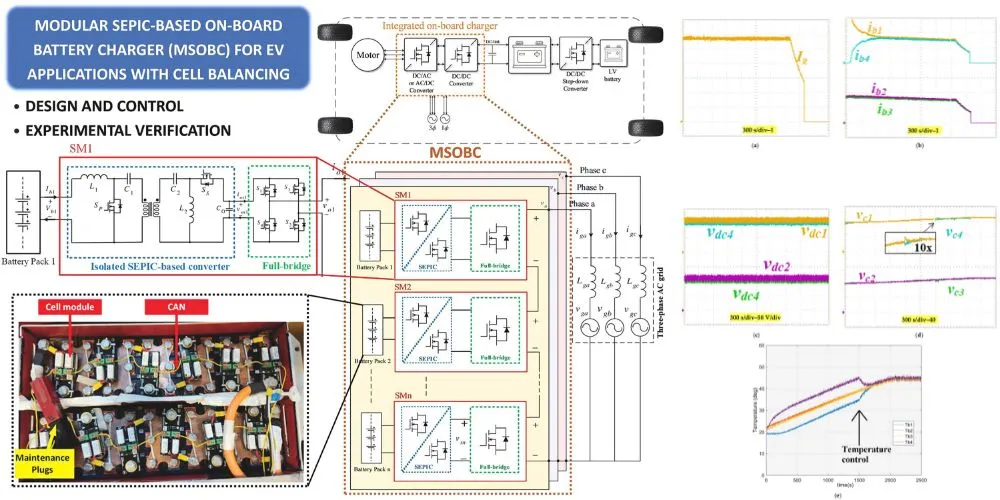Researchers from the School of Engineering, Lancaster University, have introduced a groundbreaking Modular On-Board Charger (MSOBC) for electric vehicle (EV) applications, presenting a significant advancement in safety, reliability, and operational efficiency. The research was published in MDPI Batteries. The MSOBC employs a novel approach by modularizing battery units within the EV’s energy storage system, enhancing safety measures while maintaining high-performance standards for the high-voltage (HV) system.
At the core of the MSOBC is a SEPIC converter, offering modularity to battery units and ensuring optimal safety and operation. The SEPIC converter on the battery side controls battery segments with continuous current, utilizing an input inductor to smooth battery currents without needing large electrolytic capacitors. Integrating full-bridge voltage source converters on the AC side further enables bidirectional energy flow during traction and regenerative braking and facilitates battery unit charging.
The MSOBC introduces a decentralized submodule structure, incorporating bidirectional isolated SEPIC converters on the DC side (battery packs) and bidirectional full-bridge converters on the AC side (AC grid or Permanent Magnet Synchronous Motor). This design redistributes voltage and current stresses, increasing redundancy, reliability, and overall system safety. An isolated version of the SEPIC converter provides galvanic isolation between batteries and the AC output side to enhance safety further.
The control system ensures optimal EV operation, addressing charge and temperature balance without compromising the required modes of operation. Mathematical analyses are validated through experiments on a full-scale EV controlled by TMS320F28335 DSP, demonstrating the feasibility and efficacy of the MSOBC.
Experimental results from an EV racing car equipped with an 80 kW Permanent Magnet Synchronous Motor (PMSM) and 5.7 kWh battery segments showcase the MSOBC’s ability to retrieve, balance, and supply power to batteries, even with varied initial States of Charge (SoCs) or temperatures.
The SoC balancing method successfully corrected a 15% mismatch in battery SoCs, maintaining a temperature difference of only 10°C between the hottest and coldest cells. The research presents a promising step forward in advancing the safety and efficiency of EVs through innovative charging and energy management systems.










